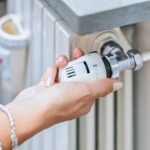If you’re relying on electric heat tapes to keep your pipes from freezing, understanding potential problems with your system’s thermostat and ensuring thorough safety testing is critical. With winter fast approaching, ensuring that your heat tape systems function correctly can mean the difference between a smooth season and costly freeze damage. Dive into this guide to discover how you can tackle common issues and safeguard your equipment effectively.
- Identify the frequent causes of thermostat failures and learn troubleshooting steps to maintain optimal system functionality.
- Explore the importance of routine safety testing to prevent hazards and ensure long-term reliability of your heat tape systems.
- Learn straightforward methods to diagnose and fix issues before they lead to expensive repairs or replacements.
By engaging with this article, you’ll gain essential insights into preventative maintenance and troubleshooting strategies that can enhance the safety, efficiency, and lifespan of your electric heat tape systems. Equip yourself with this crucial knowledge to stay ahead of freezing conditions and protect your assets effectively.
Understanding Electric Heat Tape Problems: Thermostat and Safety Testing Guide
Electric heat tapes play a vital role in protecting pipes from freeze damage, especially in colder climates. These tapes are designed to maintain pipes at a safe temperature, preventing costly repairs and water damage. However, like any electrical device, they can encounter problems.
One major area where issues may surface is in the thermostat of the electric heat tape system. A malfunctioning thermostat can result in ineffective heating or even potential safety hazards. It’s essential to understand how thermostats operate within these systems, as they regulate the temperature by switching the heat tape on and off as needed.
Regular safety testing is also critical to ensure that your electric heat tape is performing at peak efficiency. Safety tests can help identify worn-out components or faulty sections of the tape that may lead to failure. By conducting routine inspections and maintenance, you can prevent unexpected breakdowns and keep your system running safely and smoothly.
Common Thermostat Issues and Troubleshooting
Thermostats are the brain of your electric heat tape system, and when they malfunction, the system’s efficacy can be compromised. Several common issues can affect thermostat operation. Wiring faults are a frequent culprit, often caused by wear and tear or poor installation. Sensor malfunctions are another issue, which may prevent the thermostat from accurately measuring pipe temperatures.
To effectively address these problems, identifying the root cause is crucial. Begin by inspecting the thermostat and its connections for any signs of damage or looseness. Reattach or replace faulty wires as necessary to ensure a secure connection.
If the sensors are malfunctioning, they may need recalibration or replacement. Cleaning sensors can sometimes resolve issues, as dirt and debris might interfere with their readings. If problems persist after these attempts, you might need to consult a professional for a more detailed inspection and repair.
By implementing these troubleshooting steps, you can restore the functionality of your electric heat tape system. Regular checks and maintenance help ensure that your thermostat operates reliably, safeguarding your pipes from freeze damage.
Conducting a Comprehensive Safety Testing for Electric Heat Tape Problems: Thermostat and Safety Testing Guide
Safety is paramount when it comes to electric heat tapes, as they play a crucial role in preventing pipes from freezing during cold weather. However, if not properly maintained, these systems can pose significant safety hazards. To keep your electric heat tape system operating reliably and safely, conducting comprehensive safety tests on a regular basis is essential.
Start by visually inspecting the entire heat tape system. Check for any visible damage such as cracks, fraying, or discoloration that might indicate a failure or aging of the material. Damaged areas can lead to electrical shorts or, in worst cases, fires.
Next, ensure that all connections and joints are secure. Loose connections can lead to fluctuations in the system’s performance or pose a fire risk. Test the thermostat on your electric heat tape to confirm it is functioning correctly, as a malfunctioning thermostat can lead to overheating.
Utilize a multimeter to verify that the electrical current across the tape is consistent and within safe parameters. This tool can help detect wiring faults that may not be visible during a manual inspection. Evaluating the electrical resistance will aid in identifying potential issues before they become hazards.
Another critical step is to confirm that all safety compliance marks such as UL (Underwriters Laboratories) or CE (Conformité Européenne) are still intact and visible. These marks indicate that the product has been subjected to rigorous safety tests and meets industry standards.
Finally, ensure that your electric heat tape system is installed according to the manufacturer’s recommendations and local building codes, which provide guidelines for safe installation practices.
By systematically conducting these safety inspections and tests, you enhance the reliability of your heat tape system, minimizing the risks of failure during severe freezing conditions. Regular maintenance checks not only guarantee safety but also prolong the life and effectiveness of your equipment.
Frequently Asked Questions: Electric Heat Tape Problems
What are common signs of thermostat failure in electric heat tapes?
Common signs include inconsistent heating, failure to turn on, or the system remaining on constantly. Check for wiring issues or sensor malfunctions.
How do I troubleshoot a malfunctioning thermostat?
Inspect wiring connections, test the thermostat with a multimeter, and replace if defective. Ensure all components are properly connected.
Why is regular safety testing important for electric heat tapes?
Regular testing helps prevent safety hazards like electrical shorts or fire risks, ensuring the system operates reliably.
What are the basic steps in conducting safety tests for heat tapes?
- Visual inspection for damage.
- Check connections and insulation.
- Test the circuit with a multimeter.
Can faulty electric heat tapes be repaired, or do they need to be replaced?
Minor issues like loose connections can be repaired, but significant damage often requires replacing the tape to ensure safety.





